ESP
En el marco de la celebración del nacimiento de Jesús Soto y Carlos Cruz-Diez, el Museo de Bellas Artes de Caracas inauguró, en 2023, la muestra Revisitando la utopía. Abstraccionismo geométrico. Caracas-París 1948-1958, cuya curaduría estuvo a cargo de Zacarías García (Director del Museo) y mi persona (Gladys Yunes). Este proyecto se enmarca dentro de la categoría de exposiciones revisionistas que asumieron las instituciones museísticas a finales del siglo XX y principios del XXI. El recorrido en sala –primero en la sala 6 y posteriormente en la sala 7– arroja una mirada retrospectiva a las propuestas iniciales en las que incursionaron estos dos artistas, acompañados de otros autores cuyos trabajos marcaron pautas en el devenir de esta tendencia geométrica en el ámbito nacional e internacional.
Las obras seleccionadas –pertenecientes a la Fundación Museos Nacionales de Venezuela–, reúnen un aproximado de cuarenta y cinco piezas, bidimensionales y tridimensionales, de diferentes técnicas y formatos, resguardadas en las colecciones de la Galería de Arte Nacional (GAN), Museo Arturo Michelena (MAM), Museo de Bellas Artes (MBA) y Museo de Arte Contemporáneo de Caracas Armando Reverón (MACCAR). Dichas creaciones fueron ejecutadas entre 1948 y 1958, una década signada por múltiples cambios que transformaron el orden social y cultural del país.
Entre las producciones más tempranas se encuentran: Estructura vertical, 1950, de Pascual Navarro, Plano comunicante, 1950, de Luis Guevara Moreno, Tríptico A, 1951, de Omar Carreño, Puerta basculante, 1953, de Mateo Manaure y Tenso dinámico, 1954, de Carlos González Bogen, solo por nombrar algunos. Asimismo, destacan cuatro composiciones realizadas por Genaro Moreno de 1950 y 1953, cedidas en préstamo por FUNDAGEM. Del año 1957 se incluyeron Morado oscuro, un óleo de Mercedes Pardo, y Aroa, una escultura modulada en hierro de Víctor Valera, premiada en el XIX Salón Oficial Anual de Arte Venezolano. De 1958 tenemos un lienzo de Elsa Gramcko titulado N°12, una soldadura en metal realizada por Gego (Gertrud Goldschmidt), denominada Partiendo de un rombo, y Mural de Bruxelas, una pieza monumental de Jesús Soto.
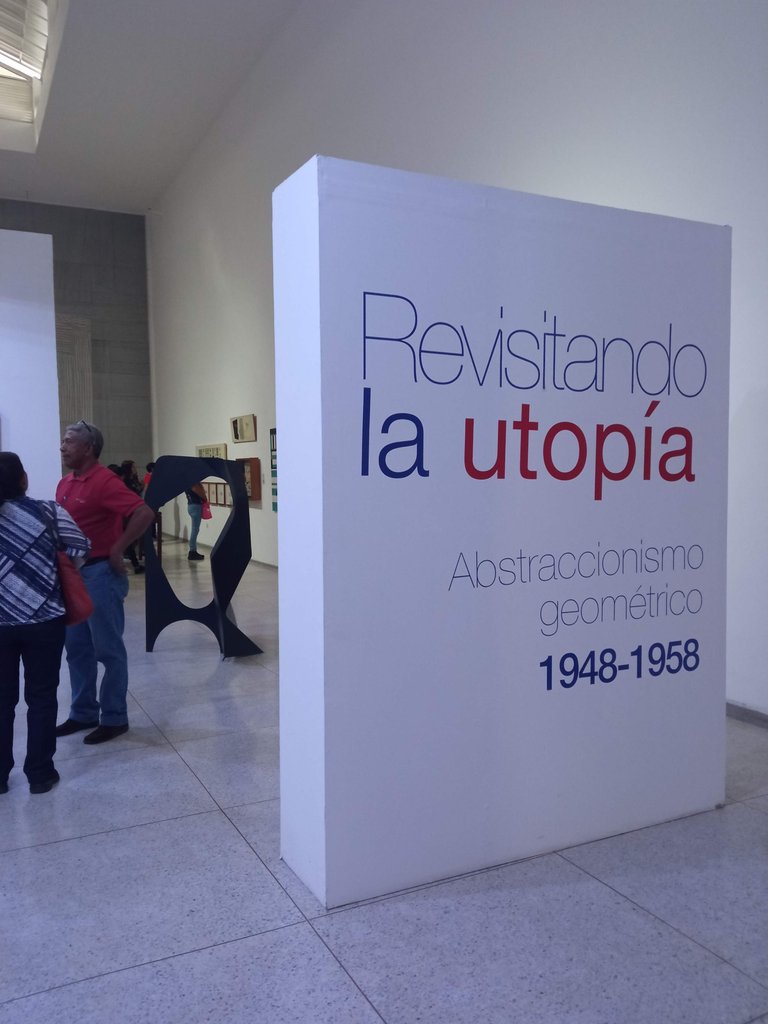
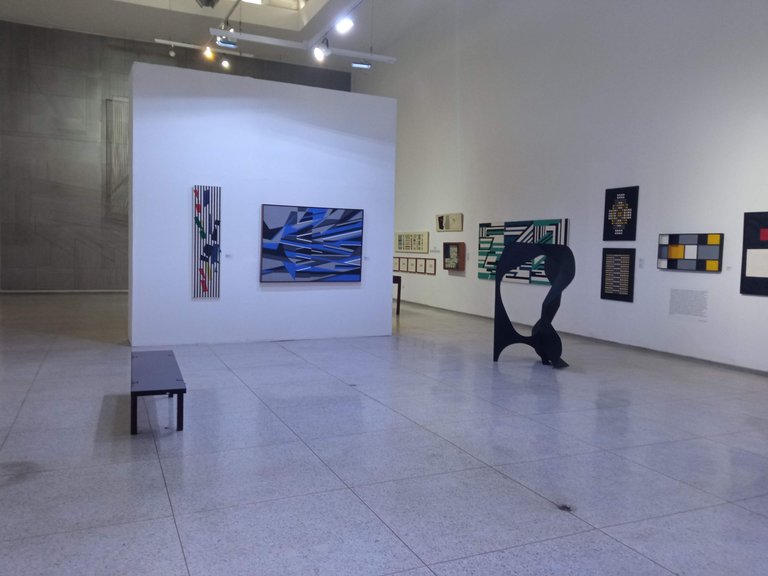
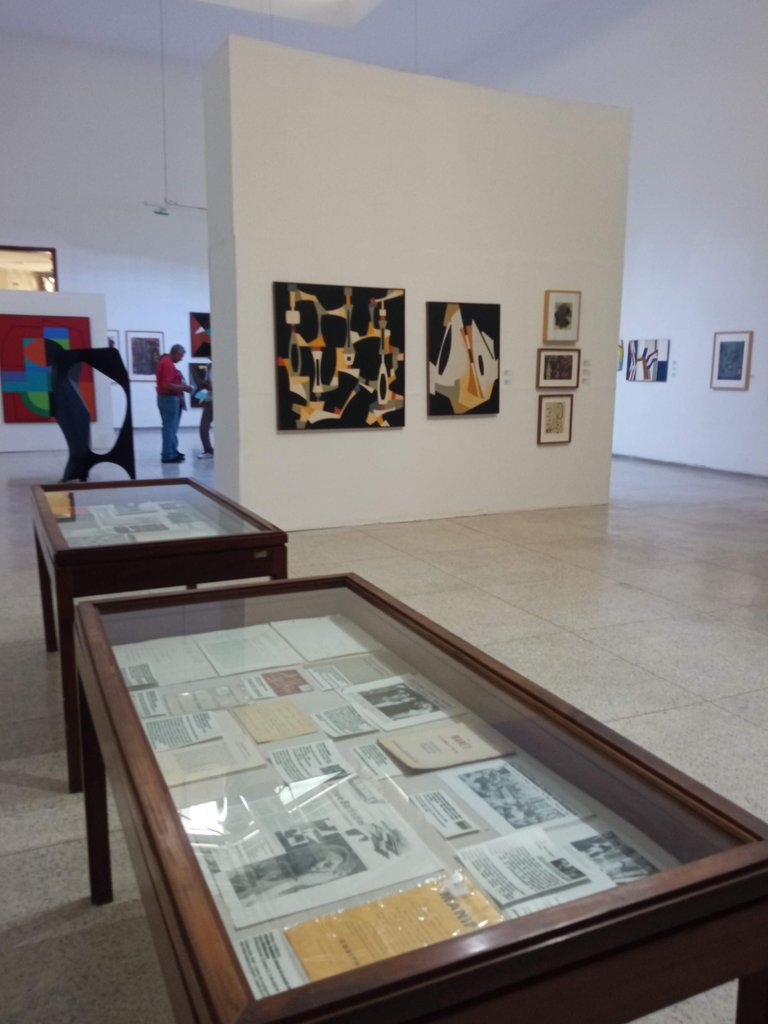
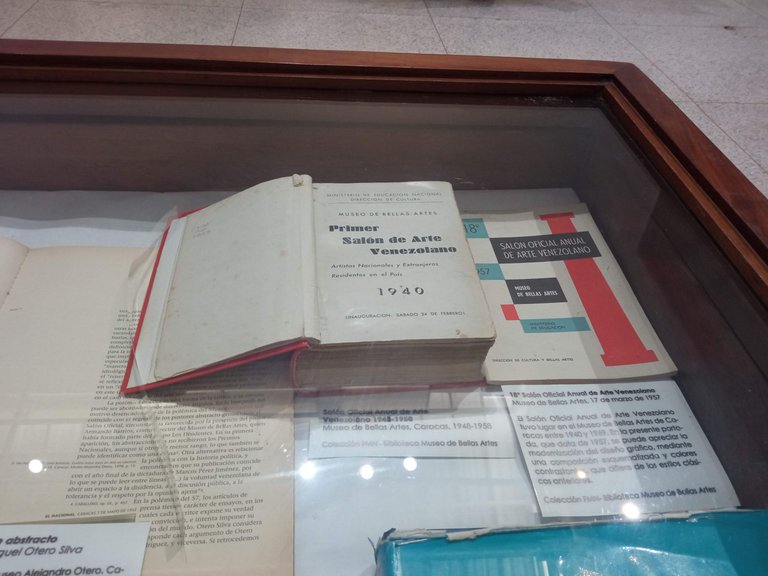
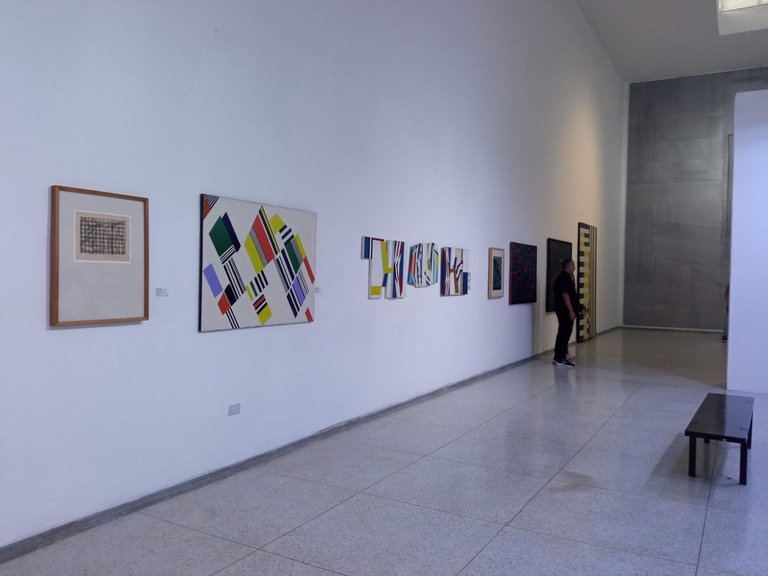
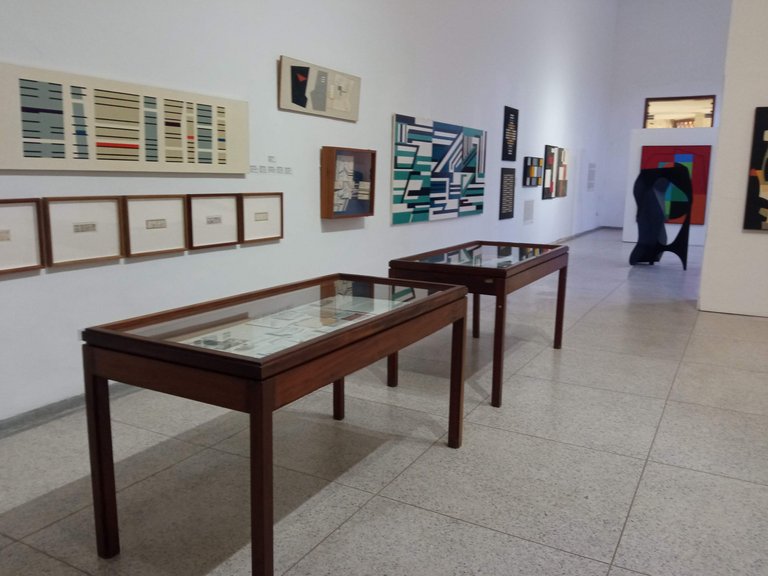
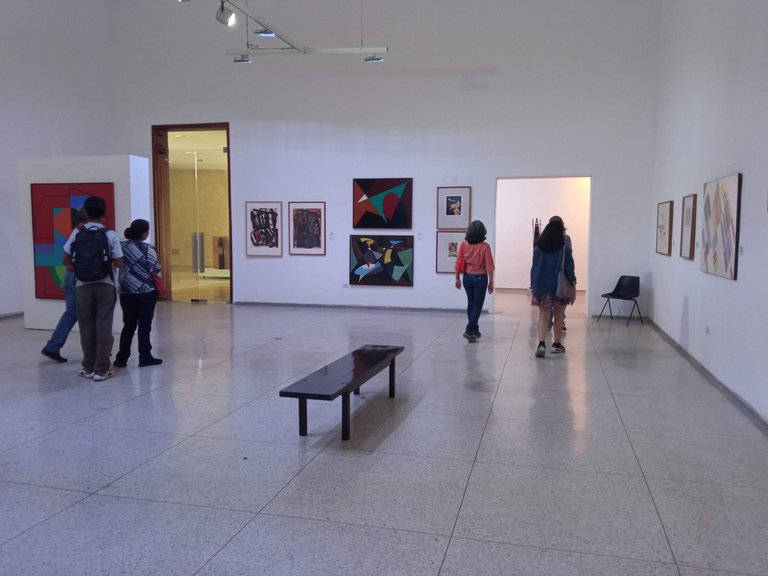
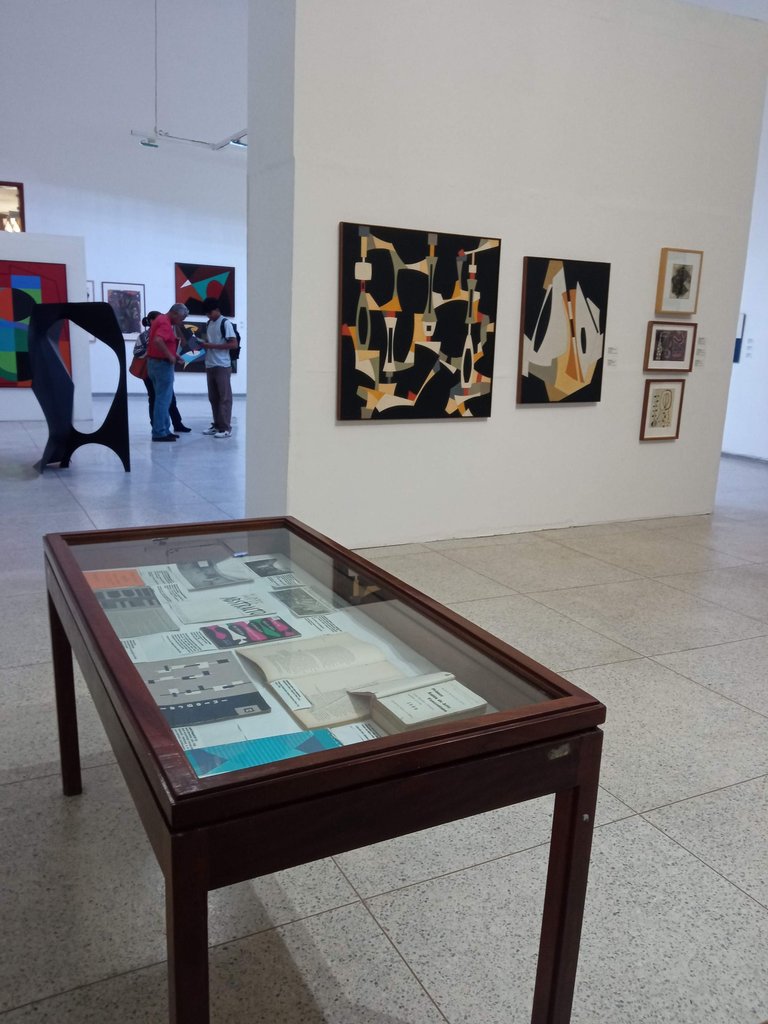

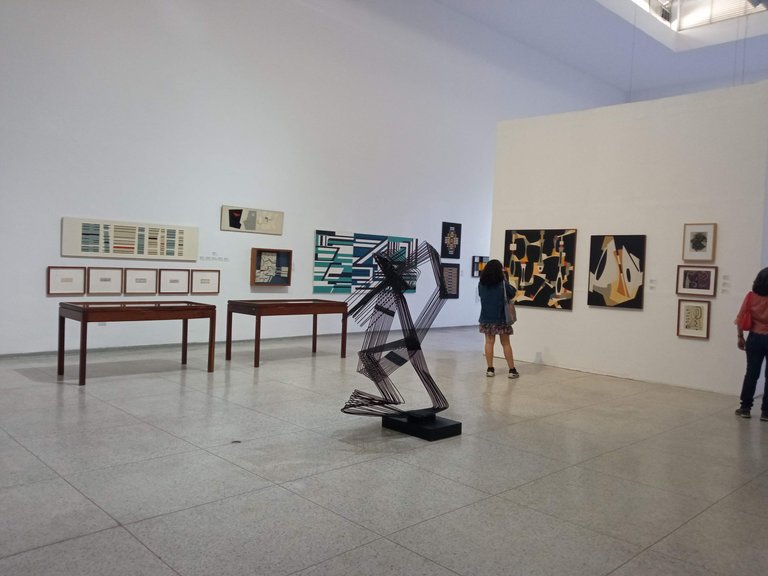

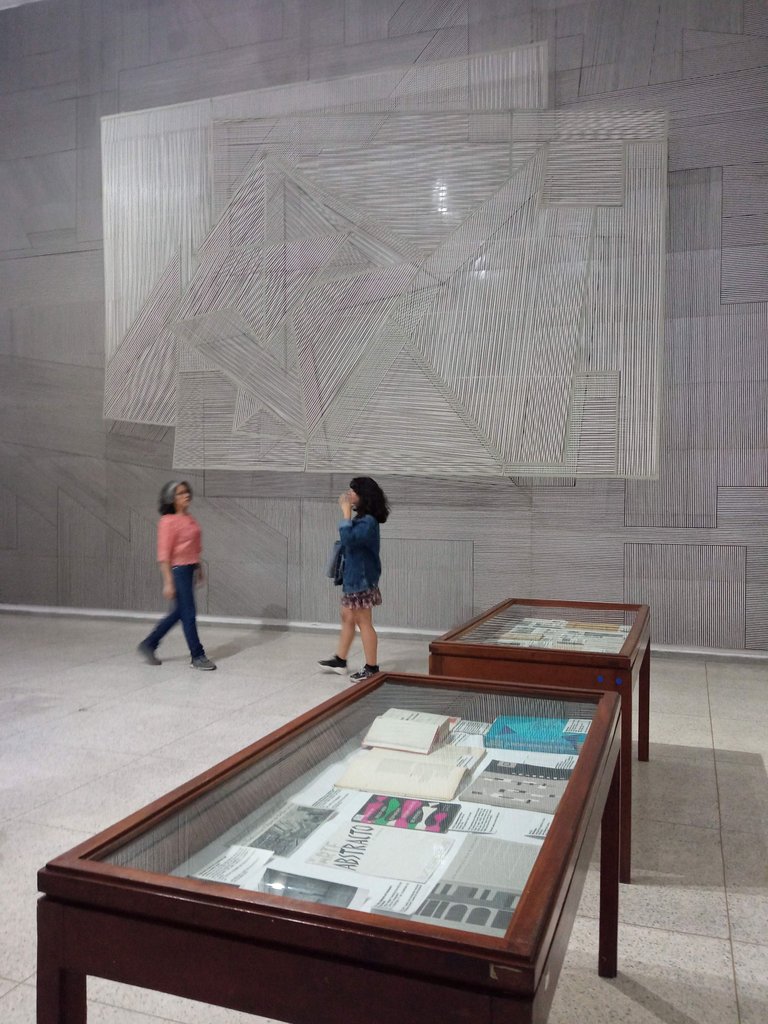
ENG
As part of the celebration of the birth of Jesús Soto and Carlos Cruz-Diez, the Museo de Bellas Artes de Caracas inaugurated, in 2023, the exhibition Revisiting Utopia. Geometric Abstractionism. Caracas-Paris 1948-1958, curated by Zacarías García (Director of the Museum) and myself (Gladys Yunes). This project is framed within the category of revisionist exhibitions assumed by museum institutions at the end of the 20th century and the beginning of the 21st century. The exhibition -first in Room 6 and then in Room 7- takes a retrospective look at the initial proposals of these two artists, accompanied by other authors whose works set the guidelines for the evolution of this geometric trend at the national and international level.
The selected works -belonging to the Fundación Museos Nacionales de Venezuela- bring together approximately forty-five two- and three-dimensional pieces, of different techniques and formats, from the collections of the Galería de Arte Nacional (GAN), Museo Arturo Michelena (MAM), Museo de Bellas Artes (MBA) and Museo de Arte Contemporáneo de Caracas Armando Reverón (MACCAR). These creations were executed between 1948 and 1958, a decade marked by multiple changes that transformed the social and cultural order of the country.
Among the earliest productions are: Estructura vertical, 1950, by Pascual Navarro, Plano comunicante, 1950, by Luis Guevara Moreno, Tríptico A, 1951, by Omar Carreño, Puerta basculante, 1953, by Mateo Manaure and Tenso dinámico, 1954, by Carlos González Bogen, just to name a few. Four compositions by Genaro Moreno from 1950 and 1953, on loan from FUNDAGEM, also stand out. From 1957 we include Morado oscuro, an oil painting by Mercedes Pardo, and Aroa, a sculpture modulated in iron by Victor Valera, awarded at the XIX Annual Official Venezuelan Art Salon. From 1958 we have a canvas by Elsa Gramcko entitled N°12, a metal welding by Gego (Gertrud Goldschmidt), called Partiendo de un rombo, and Mural de Bruxelas, a monumental piece by Jesús Soto.
¿ᴺᵉᶜᵉˢᶦᵗᵃˢ ᴴᴮᴰ? ᵀᵉ ˡᵒ ᵖʳᵉˢᵗᵃᵐᵒˢ ᶜᵒⁿ
Congratulations @yunesyunesarte! You have completed the following achievement on the Hive blockchain And have been rewarded with New badge(s)
<table><tr><td><img src="https://images.hive.blog/60x70/https://hivebuzz.me/@yunesyunesarte/upvoted.png?202411122246" /><td>You received more than 200 upvotes.<br />Your next target is to reach 300 upvotes. <p dir="auto"><sub><em>You can view your badges on <a href="https://hivebuzz.me/@yunesyunesarte" target="_blank" rel="noreferrer noopener" title="This link will take you away from hive.blog" class="external_link">your board and compare yourself to others in the <a href="https://hivebuzz.me/ranking" target="_blank" rel="noreferrer noopener" title="This link will take you away from hive.blog" class="external_link">Ranking<br /> <sub><em>If you no longer want to receive notifications, reply to this comment with the word <code>STOP <p dir="auto"><strong>Check out our last posts: <table><tr><td><a href="/hive-122221/@hivebuzz/lpud-202411"><img src="https://images.hive.blog/64x128/https://i.imgur.com/pVZi2Md.png" /><td><a href="/hive-122221/@hivebuzz/lpud-202411">LEO Power Up Day - November 15, 2024